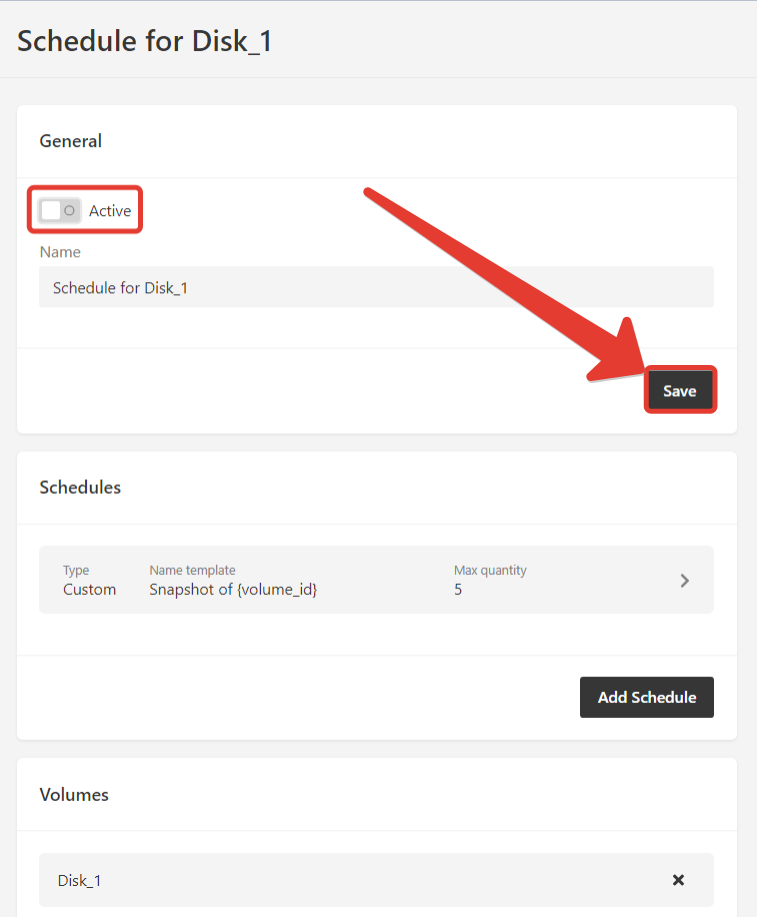
Create a schedule
Create a schedule and give it a name
Open “Snapshot Schedules” and click “Create Snapshot Schedule” in the upper right corner. The system will ask you to enter a name. Name the schedule so that it will be easier to distinguish it from others later — for example, you can use a volume name: “Snapshot of [your volume name]”.

Select volumes
Click “Add Volume” at the bottom of the page. Select one or several volumes for which snapshots will be created; you can choose both boot and regular volumes.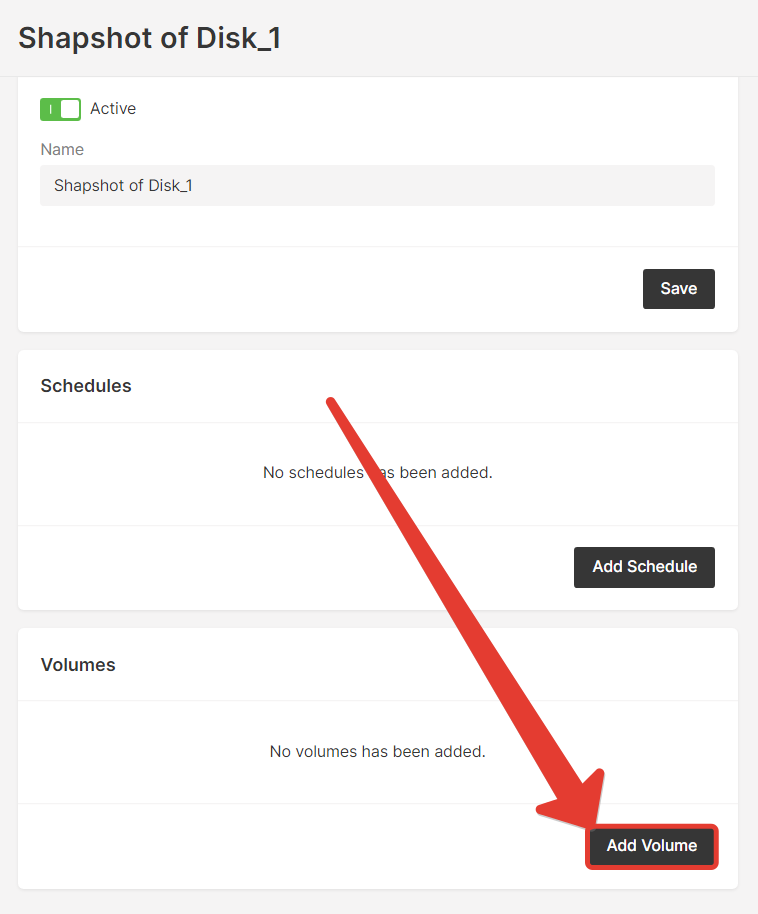
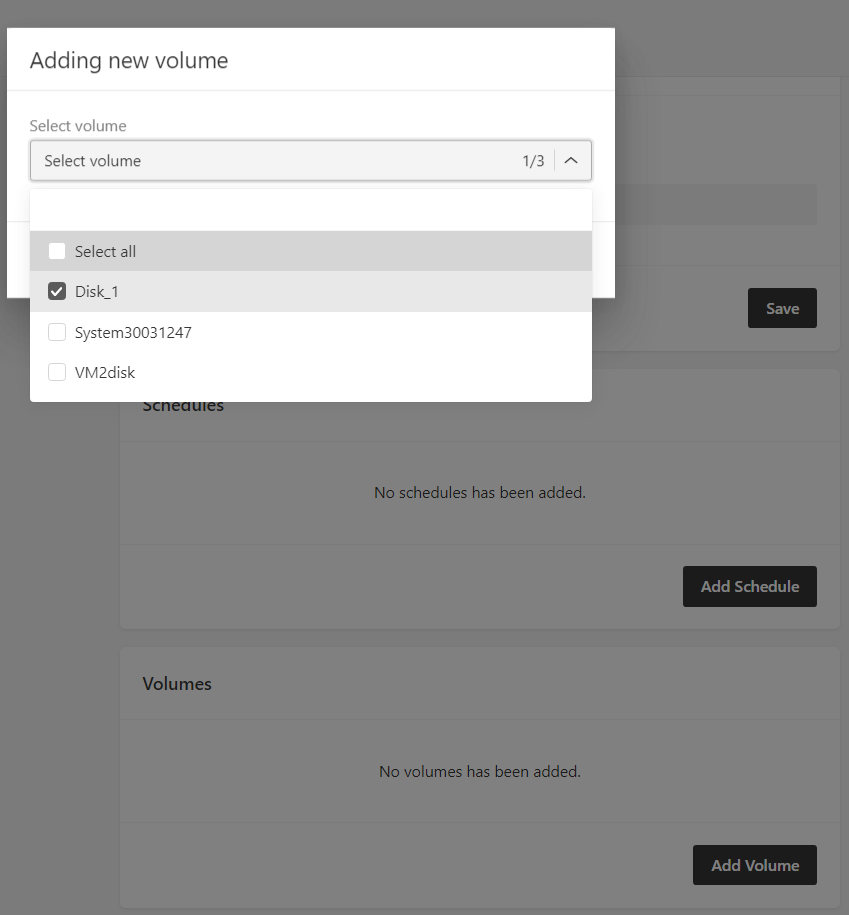

Add and configure a snapshot schedule
- Click “Add Schedule” and enter a name for future snapshots
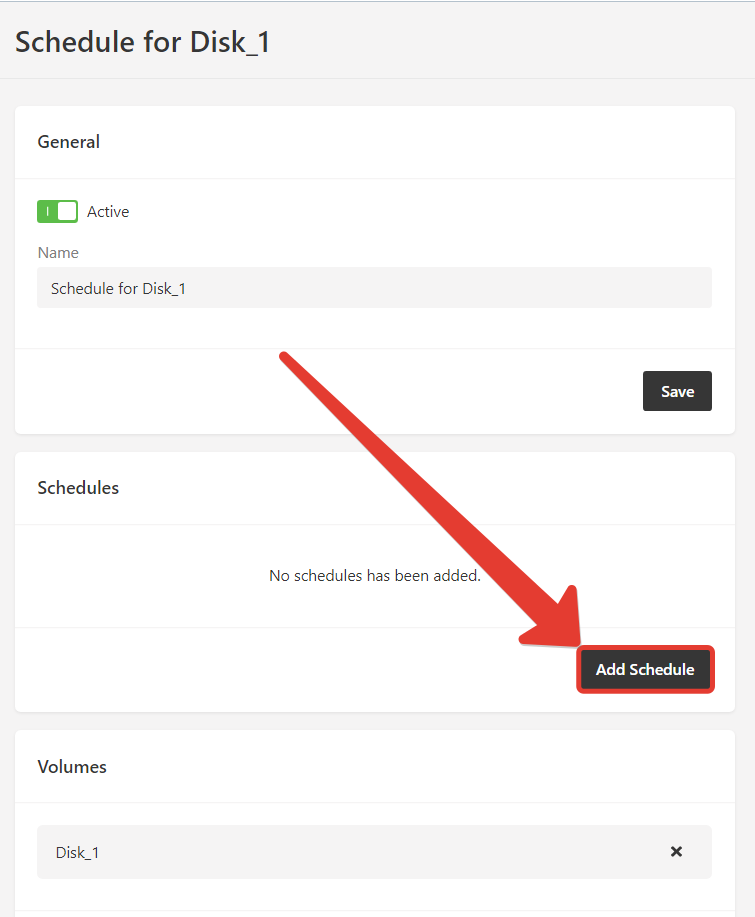

- Set the maximum resource quantity
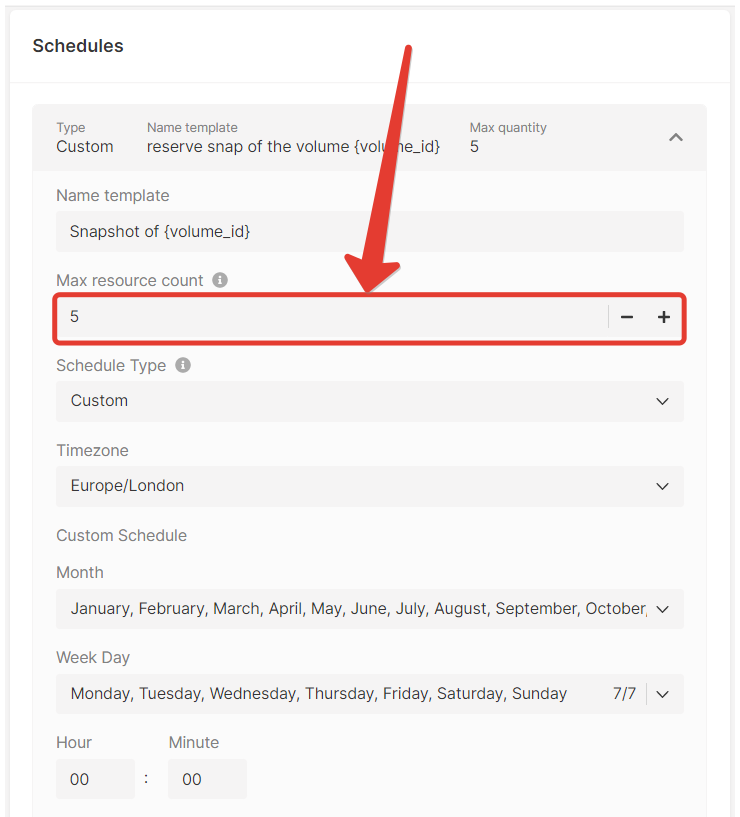
- Select the schedule type — “Custom” or “Period”
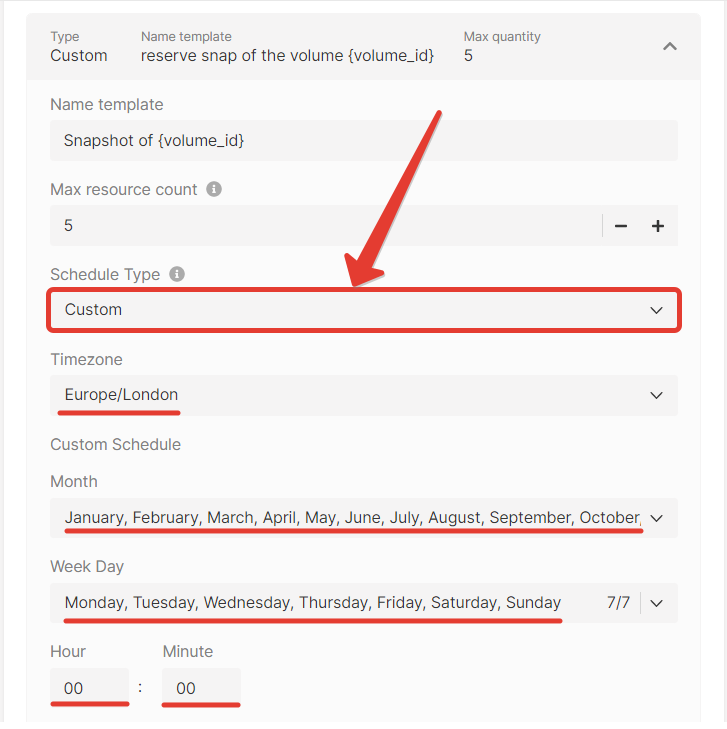
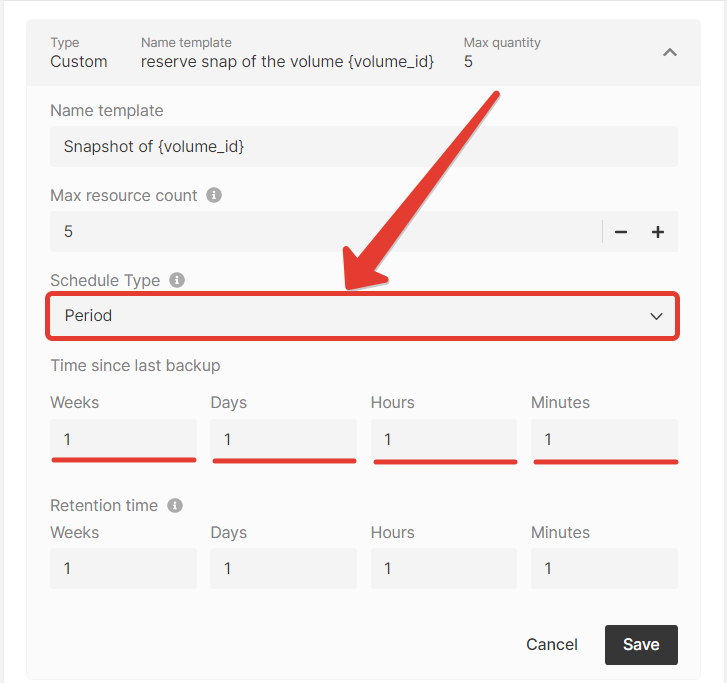
- Set the snapshots retention time

- Save the schedule.
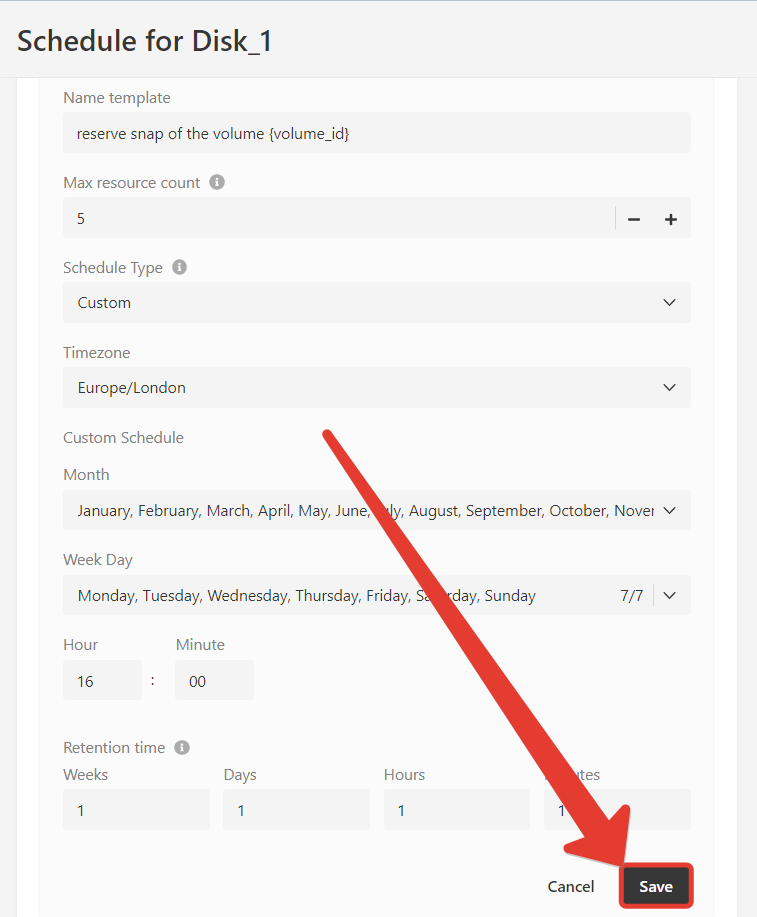
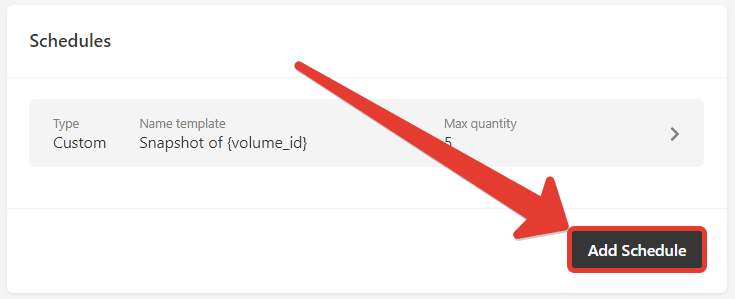
Disable and enable a schedule
Once created, each schedule is enabled by default and starts running. It gets the status “Active”.
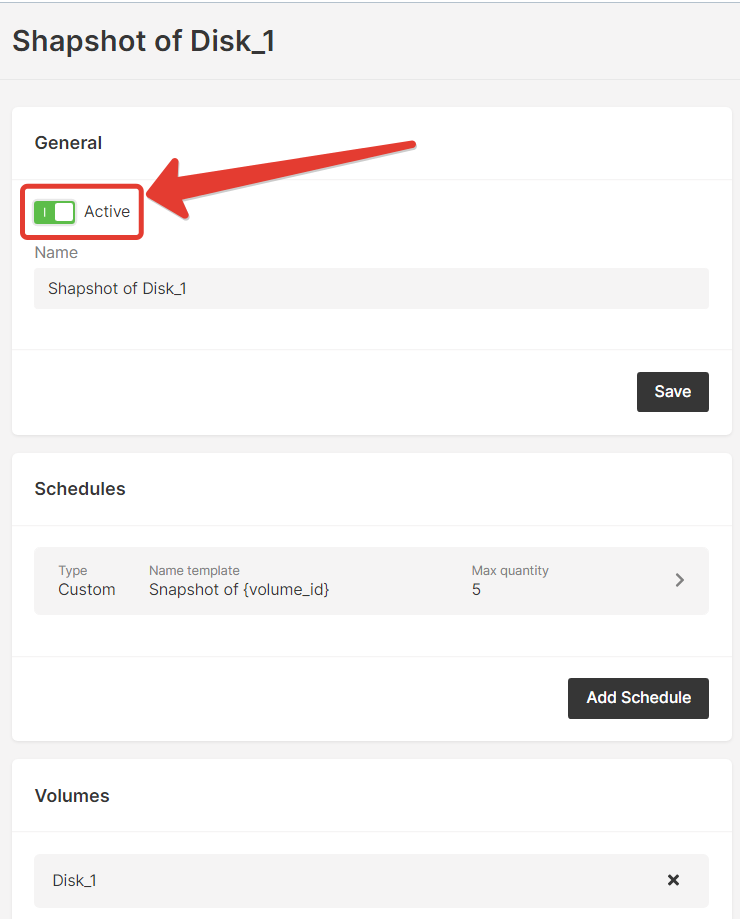

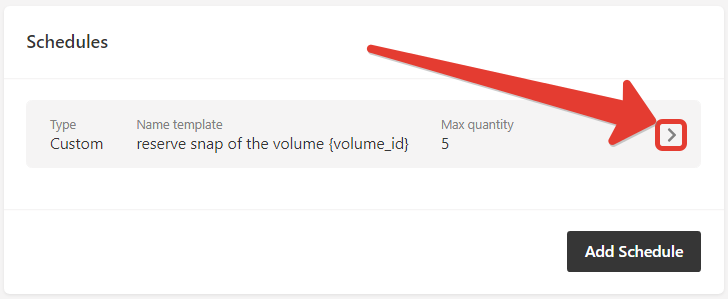
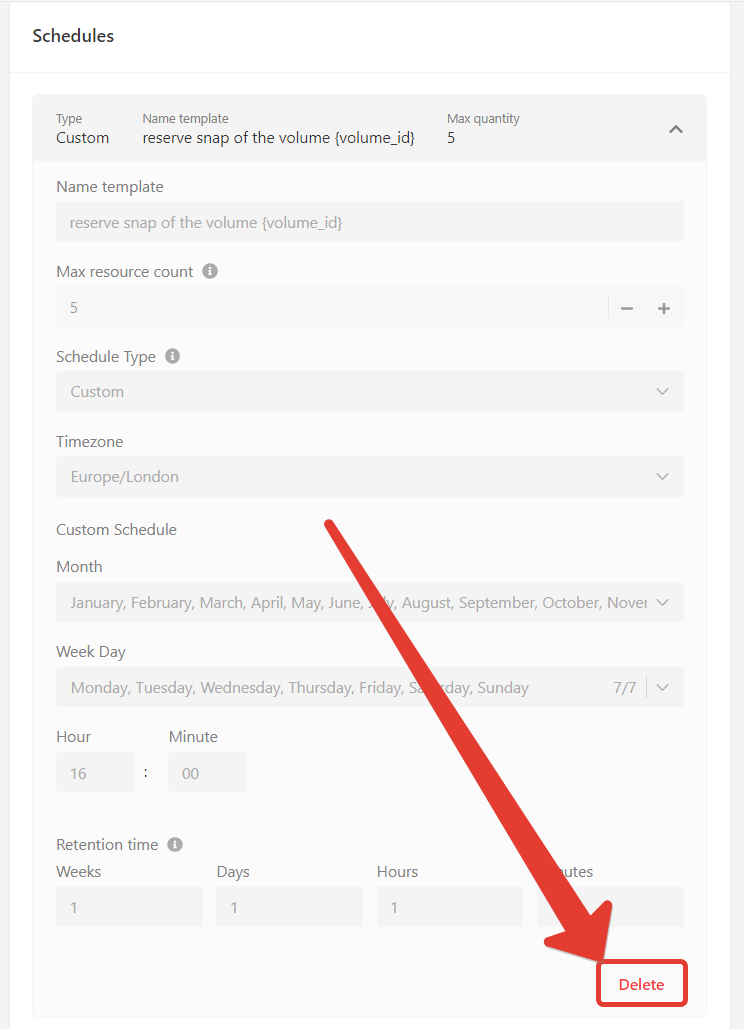
Delete a schedule
You can delete the entire schedule in the “Snapshot Schedules” section. To do this, click on the ellipsis near the required schedule and select “Delete” in the drop-down menu.